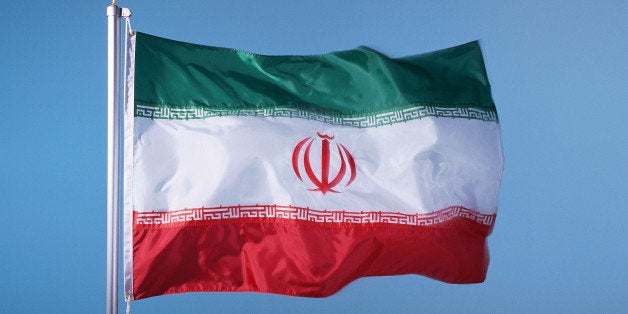
On July 14, 2015, Iran and a consortium of nations known as the P5+1 (the United States, Great Britain, France, Russia, China and Germany) signed, with great fanfare, a final nuclear agreement in which Iran agreed to specific limits on the scope and scale of its peaceful nuclear energy program, inclusive of uranium enrichment capabilities, in exchange for the lifting of certain economic sanctions that had been imposed in relation to Iran's nuclear activities. At the same time, Iran and the International Atomic Energy Agency (IAEA) signed a separate agreement, known as the "Road Map", which laid out a framework for resolving the so-called "possible military dimensions" (PMD) issue based on intelligence information in the possession of the IAEA alleging undeclared nuclear weapons-related activity on the part of Iran. Iran, for its part, had from the beginning vehemently denied the veracity of these allegations, disputing the provenance of much of the information underpinning the IAEA assessment.
The stand-off between Iran and the IAEA over the PMD issue had been one of the major drivers for international economic sanctions against Iran, and had been cited by parties within the United States and Israel as providing a justification for military action on the presumption that the IAEA claims were accurate, and Iran was pursuing a nuclear weapons program. The problem of resolving the PMD issue threatened to unravel the nuclear agreement, with calls for a deal-killing "no-notice" regime of intrusive on-site inspections linked to PMD's being made up until the very end of the negotiations. As such, eyebrows were raised when the text of the final nuclear agreement made no mention of the PMD issue beyond noting that Iran would implement an "agreed set of measures" with the IAEA intended to resolve outstanding questions about PMDs prior to the end of 2015. On December 2, 2015, the IAEA issued its "Final Assessment on Past and Present Outstanding Issues regarding Iran's Nuclear Program", fulfilling the requirements of both the "Road Map" and the final nuclear agreement. The PMD issue has, at long last, been put to bed.
The PMD issue had been used to justify stringent economic sanctions and as a potential casus belli, and in November 2011 the IAEA put its reputation on the line by publically detailing much of the information it had been using to sustain the PMD allegations. The "Road Map" the IAEA and Iran signed in July 2015 was, given its low-profile and de-linkage from the body of the main nuclear agreement, more a face-saving mechanism for the IAEA to step back gracefully from its charges than a means for Iran to provide a mea culpa explaining past nefarious activity. The IAEA's "Final Assessment" is less than Earth-shattering in its summations, noting "that a range of activities relevant to the development of a nuclear explosive device were conducted in Iran prior to the end of 2003 as a coordinated effort, and some activities took place after 2003," and that "these activities did not advance beyond feasibility and scientific studies, and the acquisition of certain relevant technical competences and capabilities." There hasn't been a more meaningless conclusion of such an over-hyped issue since the CIA assessed that Iraq had "dozens of WMD program-related activities" in the aftermath of the invasion and occupation of that country that had been based on the premise that Iraq had maintained significant viable stocks of weapons of mass destruction in violation of United Nations resolutions banning such.
Upon closer examination, the "range of activities relevant to the development of a nuclear explosive device" are far less threatening than the ominous description provided by the IAEA would lead one to believe. In every case, the IAEA was either forced to concede that their information was baseless (allegations concerning the manufacture of "uranium metal, for instance), or else could be explained through "alternative applications" involving Iranian commercial and military activities unrelated to the Iranian nuclear program. There was, in short, no "smoking gun" which could breathe life into the moribund PMD issue. The IAEA's PMD case had been constructed along the lines of a similar analytical model used by Israel in an assessment of nuclear capability and intent provided to the IAEA in 1995 about post-Gulf War nuclear activities alleged to be carried out by Iraq. In that report, Israel cited "dual-use" activities (i.e., those which could be used as part of a nuclear weapons program, but which had a legitimate non-nuclear military or civilian application) which it linked together to create a hypothesized organizational structure and mission which, in the end, simply did not exist. Given the fact that Israel has been suspected of being a major supplier of the intelligence information used by the IAEA to construct its PMD case against Iran, such parallels should not come as a surprise. In the end, when subjected to scrutiny, the allegations derived from this analytical approach did not stand up, either in Iraq or Iran.
In the aftermath of the invasion of Iraq, both the United Nations and the United States were faced with the need to walk back from their respective affirmations, made prior to the start of the war, about the existence of weapons of mass destruction in Iraq. But there was simply no face-saving mechanism available to either party that could mitigate against the alarming lack of responsible analysis of available information which undermined such claims. The end result was a war based on false premise, the ramifications of which continue to resonate in disastrous fashion today. In the case of the IAEA's assertions that Iran was carrying out nuclear related activities possessing a "possible military dimension", many of the same parties responsible for pushing for war with Iraq over weapons of mass destruction had used the IAEA claims as just cause for a new war with Iran. The de-linking of the PMD issue from the main body of the final nuclear agreement with Iran helped de-politicize an issue that had failed in its original purpose of promulgating conflict, and had become a detriment to those who now sought a peaceful solution to the problem of Iran's nuclear program. In this regard, the IAEA's "Final Report" is more a political face-saving exercise than technical expose. Fortunately, reason prevailed, and the PMD case against Iran has run its course, not with the bang anticipated by its supporters, but rather a whisper.
